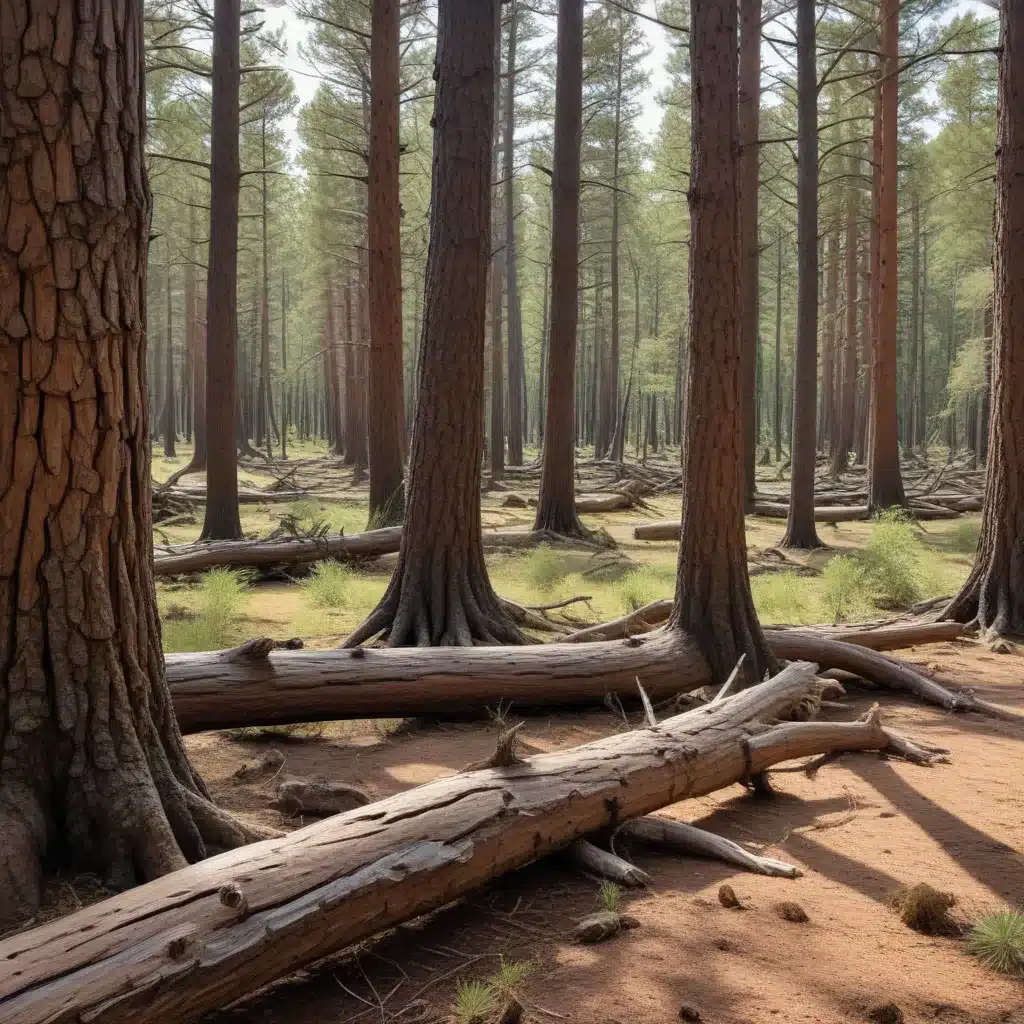
At Crooked Pines Farm, we take great pride in the diverse and thriving ecosystems that call our land home. From the vibrant wildflower prairies to the lush bottomland hardwood forests, our farm is a haven for a remarkable array of flora and fauna. As a farm educator, I’m excited to guide you on an in-depth exploration of these intricate natural wonders.
Diverse Flora and Fauna
Unique Plant Species
Step onto our trails, and you’ll be greeted by a riot of color and texture. Our prairie ecosystems are alive with the delicate blooms of purple coneflowers, black-eyed Susans, and prairie grasses that sway gently in the breeze. Venture deeper into the bottomland forests, and you’ll discover the stately presence of towering cottonwood and pecan trees, their branches providing shade and shelter for a multitude of creatures.
Thriving Animal Populations
Here at Crooked Pines, we’re home to a remarkable diversity of wildlife. Flocks of migratory birds, from vibrant warblers to majestic bald eagles, find refuge in our forests and wetlands. Keen-eyed visitors might spot the elusive bobcats, deer, or even the occasional black bear foraging for food. Our aquatic habitats teem with life, from the bass and gar swimming in our lakes to the turtles and alligators basking on the shores.
Interdependent Relationships
At the heart of these thriving ecosystems are the intricate interdependent relationships that bind the flora and fauna together. The wildflowers provide vital nectar and pollen for our pollinator populations, which in turn help these plants reproduce. The wetlands serve as a nursery for young fish and shellfish, while also filtering and purifying our groundwater. Every organism, from the smallest insect to the mightiest apex predator, plays a critical role in maintaining the delicate balance of these natural wonders.
Environmental Factors
Climate and Precipitation
The rich diversity of life at Crooked Pines is a direct result of the unique environmental factors that shape our farm. Our temperate climate, with its distinct seasonal changes, allows for a dynamic and ever-evolving tapestry of life. The reliable precipitation, ranging from gentle spring showers to the occasional thunderstorm, nourishes our lush vegetation and replenishes our waterways.
Soil Composition
The soil composition at Crooked Pines is equally important in sustaining our diverse ecosystems. The nutrient-rich, alluvial soil found in our bottomland forests and wetlands supports the towering hardwood trees and the thriving aquatic life. In contrast, the well-drained, sandy loam of our prairie habitats provides the ideal conditions for the deep-rooted grasses and wildflowers to thrive.
Topographical Variations
The undulating topography of our farm also plays a significant role in the distribution and abundance of our flora and fauna. The gentle slopes and low-lying areas adjacent to our lakes and bayous create wetland habitats that are essential for the survival of many aquatic species. The elevated ridges and rolling hills, meanwhile, offer drier, well-drained conditions perfect for our prairie communities to flourish.
Adaptations and Survival Strategies
Plant Adaptations
The plants at Crooked Pines have evolved a remarkable array of adaptations to thrive in their respective environments. Our prairie grasses have developed deep, extensive root systems to anchor themselves in the well-drained soil and access vital moisture and nutrients. The cottonwood trees in our bottomland forests, on the other hand, have adaptations that allow them to withstand the periodic flooding that nourishes their ecosystem.
Animal Adaptations
The animals that call Crooked Pines home have also developed ingenious survival strategies. The bald eagles, for instance, have keen eyesight and powerful talons that enable them to spot and capture their prey from great distances. The alligators in our wetlands, meanwhile, employ their impressive camouflage and ambush hunting tactics to successfully hunt their unsuspecting prey.
Symbiotic Interactions
Beyond individual adaptations, the creatures at Crooked Pines engage in symbiotic relationships that are essential for the health of the entire ecosystem. The pollinating insects, such as bees and butterflies, rely on the nectar and pollen provided by our wildflowers, while simultaneously facilitating the pollination and reproduction of these vital plants.
Threats and Conservation Efforts
Deforestation Concerns
Despite the thriving ecosystems we’re fortunate to steward, Crooked Pines is not immune to the threats that face many natural habitats. Deforestation remains a significant concern, as the demand for agricultural land and development can lead to the loss of critical habitats for our native species.
Invasive Species Impact
Another challenge we face is the introduction of invasive species, which can disrupt the delicate balance of our ecosystems. Aggressive plant species can outcompete our native vegetation, while non-native animal introductions can have devastating effects on our indigenous populations.
Restoration Initiatives
In response to these threats, Crooked Pines Farm is committed to conservation efforts that ensure the long-term health and sustainability of our natural wonders. We actively engage in habitat restoration projects, such as prairie and wetland reestablishment, to provide vital refuges for our threatened species. We also collaborate with local conservation organizations and educational institutions to promote stewardship and environmental awareness among our community.
As you explore the diverse ecosystems of Crooked Pines Farm, I hope you’ll come to appreciate the remarkable intricacies and interdependencies that sustain these natural wonders. By understanding and respecting the delicate balance of these environments, we can all play a role in preserving their beauty and vitality for generations to come. To learn more about our farm and its educational resources, please visit https://www.crookedpinesfarm.com.


